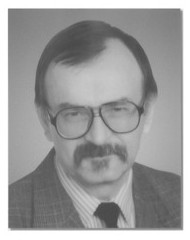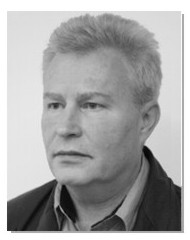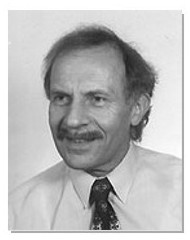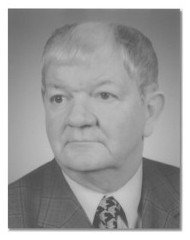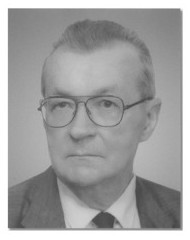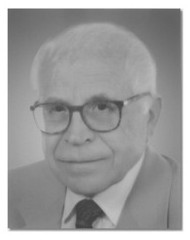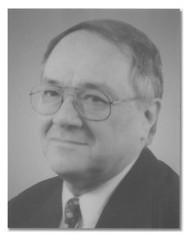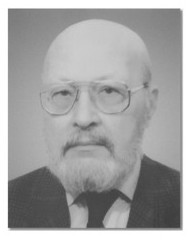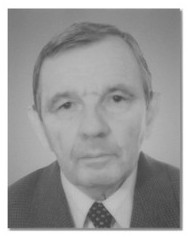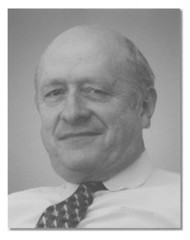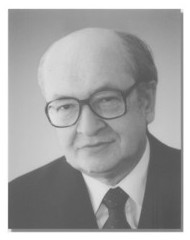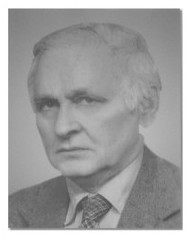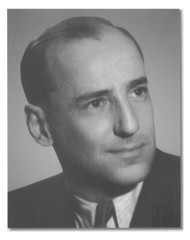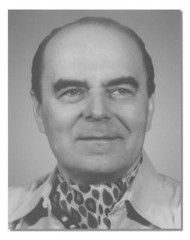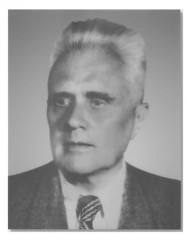Members of PAS
| Professor | PAS Foreign Member | PAS Corresponding Member | PAS Member | At IPPT PAN |
|---|---|---|---|---|
| Julian Bonder (1900-1975) | 1954 | 1966 | 1954-1962 | |
| Tadeusz Burczyński (1949) | 2007 | 2020 | 2013- | |
| Leszek Filipczyński (1923-2004) | 1969 | 1976 | 1953-1993 | |
| Władysław Fiszdon (1912-2004) | 1960 | 1969 | 1957-1982 | |
| Henryk Frąckiewicz (1929-1999) | 1986 | 1975-1996 | ||
| Michał Giersig (1954) | 2013 | 2019- | ||
| Janusz Groszkowski (1898-1984) | 1952 | 1954-1963 | ||
| Witold Gutkowski (1928-2019) | 1976 | 1991 | 1963-1999 | |
| Jan Kaczmarek (1920-2011) | 1965 | 1971 | 1978-1999 | |
| Sylwester Kaliski (1925-1978) | 1962 | 1969 | 1954-1978 | |
| Michał Kleiber (1946) | 1994 | 2002 | 1971- | |
| Aleksander Krupkowski (1884-1978) | 1952 | 1953-1964 | ||
| Jerzy Litwiniszyn (1914-2000) | 1956 | 1966 | 1954-1963 | |
| Michał Łunc (1908-1974) | 1958 | 1966 | 1960-1961 | |
| Ignacy Malecki (1912-2004) | 1954 | 1958 | 1953-1982 | |
| Zenon Mróz (1930) | 1986 | 2004 | 1955- | |
| Andrzej Nowicki (1945) | 2007 | 2020 | 1969- | |
| Wacław Olszak (1902-1980) | 1954 | 1956 | 1953-1972 | |
| Henryk Petryk (1950) | 2010 | 2022 | 1977- | |
| Jan Rychlewski (1934-2011) | 1973 | 1962-2000 | ||
| Antoni Sawczuk (1927-1984) | 1969 | 1983 | 1956-1984 | |
| Adam Smoliński (1910-1996) | 1962 | 1973 | 1953-1965 | |
| Kazimierz Sobczyk (1939 - 2017) | 1991 | 2007 | 1965-2014 | |
| Bogumił Staniszewski (1924-1995) | 1969 | 1980 | 1983-1984 | |
| Stanisław Stupkiewicz (1966) | 2020 | 1991- | ||
| Wojciech Szczepiński (1924-2010) | 1976 | 1989 | 1971-1995 | |
| Paweł Szulkin (1911-1987) | 1952 | 1961 | 1958-1963 | |
| Zbigniew Wasiutyński (1902-1974) | 1958 | 1966 | 1955-1972 | |
| Zbigniew Wesołowski (1933) | 1989 | 2010 | 1961-1996 | |
| Stefan Ziemba (1907-1994) | 1962 | 1969 | 1954-1991 | |
| Henryk Zorski (1927-2003) | 1989 | 1957-1997 |
Witold Nowacki, a Corresponding Member of PAS since 1952, and Member since 1956, deserves joining the above-mentioned list. Prof. Nowacki practically headed the theory of plasticity "school" at the Institute, and chaired the IPPT Scientific Council for 12 years, despite never having been tenured at the Institute.
Also, Witold Wierzbicki, PAS Member since 1952, headed the IPPT Scientific Council for 12 years, despite not having been tenured at IPPT.
In addition, the following IPPT professors became Members of PAS after they have left the Institute: Zbigniew Brzoska, Roman Kulikowski, Zdzisław Marciniak, Włodzimierz Prosnak, Witold Rosiński i Wojciech Truszkowski.
List of Professors
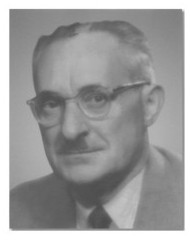 Janusz Groszkowski at IPPT: 1954-1959 Professor since 1929 | 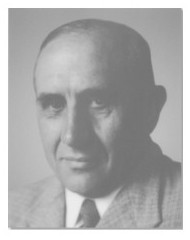 Aleksander Krupkowski at IPPT: 1953-1964 Professor since 1930 | 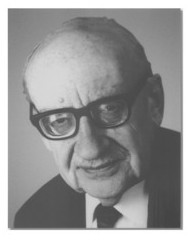 Ignacy Malecki at IPPT: 1953-1982 Professor since 1946 | 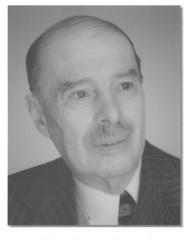 Wacław Olszak at IPPT: 1953-1972 Professor since 1946 |
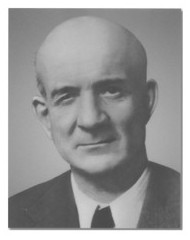 Zbigniew Wasiutyński at IPPT: 1955-1972 Professor since 1946 | 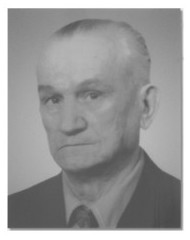 Stefan Ziemba at IPPT: 1953-1991 Professor since 1952 | 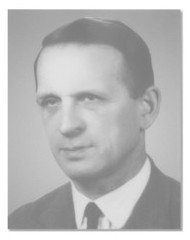 Witold Rosiński at IPPT: 1953-1960 Professor since 1953 | 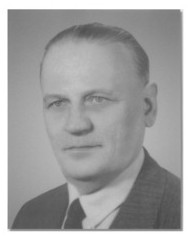 Adam Smoliński at IPPT: 1953-1965 Professor since 1953 |
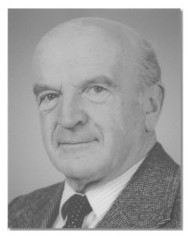 Jerzy Litwiniszyn at IPPT: 1954-1963 Professor since 1954 | 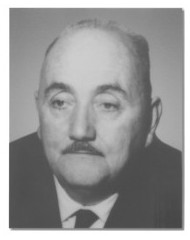 Jarosław Naleszkiewicz at IPPT: 1954-1964 Professor since 1954 | 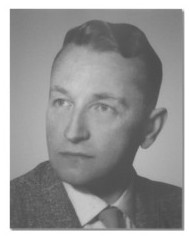 Juliusz Keller at IPPT: 1955-1955 Professor since 1955 | 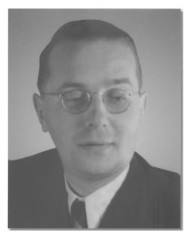 Wojciech Urbanowski at IPPT: 1955-1963 Professor since 1955 |
12345...13
Biographical Notes
Prof. MAREK BURNAT (1929–2015)
 |
Graduate of the Department of Mathematics, Physics and Chemistry at the University of Warsaw (1952). Since 1956 - a doctoral student of the Leningrad State University (currently called the Saint Petersburg State University) supervised by an outstanding Soviet mathematician, Olga Alexandrovna Ladyzhenskaya. He received the habilitation degree in 1963 at the UW Department of Mathematics and Physics, where in 1971 he became associate professor and in 1988, professor. An outstanding mathematician in partial differential equations and their application. In 1955-2000 he worked, and later headed, the Department of Equations of Mathematical Physics of the Faculty of Mathematics, Informatics and Mechanics at the University of Warsaw (MIM UW). Co-founder, and later (1987-1993) director of the Institute of Applied Mathematics and Mechanics at the above-mentioned Faculty of MIM UW. In 1956-1961 and 1964-1972 he worked at the Laboratory of Fluids and Gases of IPPT PAN. Simultaneously to his work at IPPT PAN, he regularly lectured at UW (lectures, seminars, practical classes). He supervised eight Doctors of Science, including three at IPPT PAN. Since 1967 - member of the Polish Mathematical Society; since 1991 - member of the Scientific Council of Juliusz Pawel Schauder Center for Nonlinear Studies at the Nicolaus Copernicus University in Toruń. Professor Burnat was also a member of the Editorial Committee of the Topological Methods in Nonlinear Analysis published by J. P. Schauder CBN. |
Prof. MAREK SOKOŁOWSKI (1927–2014)
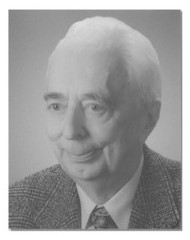 |
Graduate of the Gdansk University of Technology, Faculty of Civil and Hydraulic Engineering (1951). Professor Sokołowski received the doctoral degree in 1955, assistant professor (‘docent’) in 1957, associate professor in 1961 and professor in 1971. In 1952-1997 – at IPPT PAN. In 1960-1963 he headed the division of Solids Mechanics at the IPPT PAN Department of Continuum Mechanics, the Department of Theory of Continuous Media, IPPT PAN deputy director for research (1963-1970). Since 1993 – deputy chair of the IPPT PAN Scientific Council and from 1995 to 1998 – the chair. Editor-in-Chief of the Archiwum Mechaniki Stosowanej (Archives of Applied Mechanics, 1982-1998), Rozprawy Inżynierskie (Engineering Transactions, 1986-1998). Secretary of the Polish Academy of Sciences Publishing Editorial Committee of a 10-volume Encyklopedia Mechaniki Technicznej (Encyclopedia of Technical Mechanics), co-author and editor of volume IV: Sprężystość (Elasticity). Author of over 60 papers on the theory of elasticity, especially anisotropic media and panels, thermal stress and thermoelasticity, torque stress theory, cracking and crack propagation theory in continuous media. Supervisor of 6 doctoral theses. Honored with the Silver Cross of Merit of the Republic of Poland (1974) and the Knight’s Cross of the Order of Polonia Restituta, (1979). |
Prof. JAN MARIAN KACZMAREK (1920–2011)
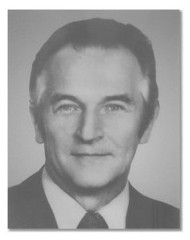 |
World War II pilot, member of the Polish resistance movement. Graduate of the AGH University of Science and Technology, Department of Mechanics (1948), where he also received the doctorate (1958) and habilitation degrees (1962). Since 1969 – professor and since 1970 – member of the Polish Academy of Sciences (PAN). He worked for AGH University (1947-1958) and Cracow University of Technology (1958-1988), also as Vice-Rector and Rector (1965-1968). In 1978-1990 prof. Kaczmarek was an employee and also head of the IPPT PAN Laboratory of Mechanical Systems. He was a specialist in the field of fundamental cutting and erosion engineering and surface layer engineering. Among his other professional activities, prof. Kaczmarek was appointed Minister of Science and Higher Education and Technology, PAN Secretary of Research, member of the Polish Parliament (Sejm) of the 5th and 9th term of office, President of SIMP (Society of Polish Engineers and Mechanical Technicians) and NOT (Polish Federation of Engineering Associations). Author of 14 books, 181 scientific papers, 11 patents, supervisor of 29 doctoral dissertations. Honorary Doctor (Honoris Causa) of: Chemnitz University of Technology, Bauman Moscow State Technical University, Poznan University of Technology, Koszalin University of Technology. Honoured with numerous prizes and medals, including Officer of the Legion of Honour of the French Republic and the Gold Palmes (Officier de l’Instruction Publique), Officer’s, Commander’s and Knight’s Cross of the Polonia Restituta Order, series of Orders of Merit, military medals etc. |
Prof. WOJCIECH SZCZEPIŃSKI (1924–2010)
 |
Graduate of Wawelberg and Rotwand School of Engineering, Faculty of Mechanics (1947) and Warsaw University of Technology, Faculty of Mechanics and Technology (1954). Prof. Szczepiński received the doctoral degree in 1960, he became IPPT PAN assistant professor (docent) in 1964, associate professor in 1971 and professor in 1977. An outstanding expert in the field of theoretical and experimental research into the mechanics of plastic deformation of metals, load-bearing capacity, mechanics of powders and soils, mechanics of materials including modeling of ductile fracture. In 1976, prof. Szczepiński became a corresponding member of Polish Academy of Sciences and in 1989 –member. 1962-1996 at IPPT PAN. He headed the Department of the Mechanics of Continuous Media. From 1993 to 1998 member of the Polish Academy of Sciences Presidium. In 1993-1995 – chairman of the Division IV: Engineering Sciences Polish Academy of Sciences, 1984-1986 – chairman of the Committee on Mechanics Polish Academy of Sciences, since 1987 – member of the Warsaw Scientific Society, from 1980 to 1997 – member of the Scientific Council of CISM International Centre for Mechanical Sciences in Udine, Italy. From 1980 to 1991 – member of the General Assembly of the International Union of Theoretical and Applied Mechanics (IUTAM), from 1997 to 2003 – chairman of the Program Council of Centrum Laserowych Technologii Metali (Center for Metal Laser Technologies, a joint center of Polish Academy of Sciences and Kielce University of Technology) from 1988 to 1994 – member of the Presidium of Centralna Komisja Kwalifikacyjna dla Kadr Naukowych (Central Qualification Board for Scientific Personnel). Doctor honoris causa of WAT Military University of Technology in Warsaw (1989) and Kielce University of Technology (2002). |
Prof. WŁADYSŁAW FISZDON (1912–2004)
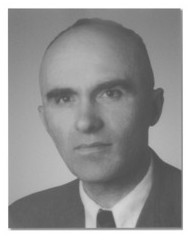 |
Aviation Engineer, mathematician. 1933 – Sorbona Bachelor graduate in fluid mechanics applications. 1935 - graduate of Ecole Nationale Superieure d'Aeronautique. In 1936-1939, aviation constructor based in Lublin, and in 1939-1946 in Toulouse and Farnborough (UK). In 1951, he received the doctorate degree from the Warsaw University of Technology (PW), 1954 – he became associate professor, 1962 – professor. Since 1950, a corresponding member of Warszawskie Towarzystwo Naukowe (Warsaw Scientific Society), 1960 – a corresponding member, and since 1969 – a member of PAN (Polish Academy of Sciences). Professor at the PW Faculty of Aeronautical Engineering in 1947-1969 and deputy director of the Institute of Aviation in Warsaw in 1948-1957. Since 1955 – associated with IPPT PAN where in 1961-1980 he worked as Head of the Department of the Mechanics of Fluids and Gases. Chairman of the Scientific Council (RN) in 1981-1983. Since 1970, professor at the University of Warsaw (UW). Editor-in-chief of numerous professional journals on the mechanics of fluids, board member of the International Union of Theoretical and Applied Mechanics (IUTAM). Author of over 60 publications devoted to applied aerodynamics, kinetic theory of gases, impact assessment of shock waves in hypersonic flows and, over the last years, mathematical and numerical models describing complex phenomena of the hydrodynamics of superfluid helium. |
Prof. IGNACY MALECKI (1912–2004)
 |
Graduate of the Faculty of Electrical Engineering of the Warsaw University of Technology – he received the diploma from Prof. J. Groszkowski in 1953. In pursuit of his academic interests, he furthered his studies at the Hertz Institute in Berlin. In 1941, he became doctor of the underground Faculty of Architecture, organized by the Warsaw University of Technology. In 1943, he received the degree of venia legendi (corresponding to the contemporary Polish habilitation degree – a post-doctoral academic degree). Later in 1946 – he became Associate Professor and in 1952 – Professor at the same university. A corresponding member of the Polish Academy of Sciences (PAN) since 1954, and a member since 1958. Member of the PAN Praesidium, Deputy Secretary of Research (1961-1968), an honorary member of many associations and federations (e.g. ASA, FASE, ISCU). In 1936 he co-established a laboratory for the Polish Radio, where he developed a functional and acoustic design of the Central Broadcasting Station. After the war, he carried out acoustic projects in the rebuilt areas of Sejm and National Theatre. He founded the Department of Applied Electrical Engineering and Acoustics, Faculty of Electrical Engineering of the Gdansk University of Technology. 1951-1969 Head of the Department of Electroacoustics, first Dean of the Faculty of Communications, then Vice-Rector of the Warsaw University of Technology. Organizer of the Department of Vibration Research (1951), one of the four core departments which formed the Institute of Fundamental Technological Research (IPPT), established in 1952. First Director of IPPT (1953-1962; and later 1973-1983). Pioneer of acoustics as an interdisciplinary science – integrating building and architecture acoustics, audioacoustics, electroacoustics, hydroacoustics, ultrasound, physical and quantum acoustics. In later years, the Professor extended his academic pursuit in the research of acoustic emission. He authored 11 monographs and c. 230 publications, of which Physical Foundations of Technical Acoustics deserves special attention. This textbook was published by Pergamon Press, Oxford (1969), and valued by students in many countries. Supervisor of 25 doctoral dissertations. Head of the UNESCO Department of Science Policy in Paris (1969-1972). Organizer of the Acoustics Committee of the Polish Academy of Sciences, initiator of the establishment of the Science Committee of the Polish Academy of Sciences. Honorary Doctor (doctor honoris causa) at: Budapest University of Technology, AGH University of Science and Technology in Cracow and Gdańsk University of Technology. Winner of State Awards and numerous distinctions. |
Prof. LESZEK FILIPCZYŃSKI (1923–2004)
 |
Radio engineer, graduate of the PW Warsaw University of Technology (1949). In 1955, he received the doctoral degree (under I. Malecki’s supervision), in 1957 he became assistant professor, 1962 – associate professor, 1969 – professor and PAS Corresponding Member, in 1972 – PAS Member, and 1997 - member of the New York Academy of Biomedical Engineering. The co-founder of Acoustics Laboratory at Główny Instytut Fizyki Technicznej (Institute of Technical Physics) incorporated, in 1952, into the Department of Vibration Research at IPPT PAN. Professor Filipczyński headed the Laboratory of Ultrasounds Passivity (1953-1969), also worked as Deputy Director for Research (1965-1969) and finally Director of IPPT (1969-1974). He constructed the first Polish metal flaw detector (ultrasonic radar) for materials research. Organizer of the first International Conference of Ultrasounds in Medicine and Biology. Honored by the American Institute of Ultrasound in Medicine (AIUM) in Washington with Ultrasounds in Medicine Pioneer Diploma. Founder and long-standing chairman of the PAN Acoustics Committee. Vice-President of the European Federation of Ultrasound in Medicine (today: European Federation of Societies for Ultrasound in Medicine and Biology), chairman of the Scientific Councils, including SC of IPPT 1999-1992 and IBBE PAS). A long-term lecturer at the Warsaw University of Technology. Author of 12 monographs, 166 publications, 62 patents. Supervisor of 14 doctoral theses. Laureate of many awards, including a two-time laureate of 2nd class State Prize. |
Prof. ANDRZEJ ZIABICKI (1967–2003)
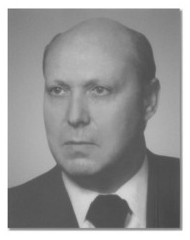 |
He was graduated from the Department of Chemistry, Technical University of Wrocław (1956), 1960 – doctoral degree, 1965 – habilitation, 1974 – professor. Assistant in the Institute of Organic Chemistry in Wrocław (1955-1956), head of the laboratory in the Institute of Synthetic Fibers in Jelenia Góra and Gorzów Wlkp. (1956-1958), head of Polymer Physic Laboratory in the Institute of General Chemistry in Warsaw (1959-1967). Employee of IPPT PAN. He created the school of polymer physics in IPPT PAN in the field of fundamental research on structure formation and properties of polymers. Lectured at the Warsaw University, Department of Physic (1967-1969). He was visiting professor in the Department of Polymer Chemistry, Kyoto University and in the Department of Chemical Engineering, University of Palermo. Scientific authority in the field of structure formation and properties of polymers in technological processes, in particular in processes of fiber formation. Author books and scientific publications (over 200). Member of European Physical Society, The Society of Rheology, International Committee of Rheology, International Society for the Interaction between Mathematics and Mechanics, Polish Chemical Society, Polish Physical Society, Polish Society of Theoretical and Applied Mechanics. Member of the editorial committees of Journal of Non-Newtonian Fluid Mechanics, Journal of Rheology, Fiber World, Fibres in Eastern Europe. Honoured with the S.G. Smith Medal of the Manchester Textile Institute, the Jan Zawidzki Medal of the Polish Chemical Society, Knight’s Cross of the Order of Polonia Restituta, Golden Cross of Merit. |
Prof. ADAM SMOLIŃSKI (1910–1996)
 |
Graduate of the Department of Electronics of the Warsaw University of Technology (1933). Until 1939, he worked at PZTR Państwowe Zakłady Tele- i Radiotechniki (Polish National Tele- and Radioelectronics Company) as technical director, constructor of amplifiers for the Polish Sejm, constructor of MS “Piłsudski” and MS Batory” transatlantic liners and also radio modulators for the General Staff of The Polish Armed Forces. During the Second World War, he took part in crafting equipment for the Polish Home Army and in decoding V1 and V2 missile control modules. After the war in 1945, he worked on reestablishing PZTR, and in 1949-1952 he worked at Państwowy Instytut Telekomunikacyjny (Polish Institute of Telecommunications). At around the same time, he started lecturing at the WUT Department of Electrical Engineering. Also at WUT, in 1947-1950, he headed the Telecommunications Division which, in 1951, developed into the Department of Communications. He became dean of the department in 1951, which he headed until 1952. Founder and Head of two Faculties – Podstawy Telekomunikacji (Fundamental Telecommunications) and Układy Elektroniczne (Electronic Systems). Organizer of Katedra Magnetyków i Dielektryków (Faculty of Magnetics and Dielectrics), Head of Zakład Układów Elektronicznych (Laboratory of Electronic Systems), later Zakład Układów i Aparatury Mikrofalowej (Laboratory of Microwave Systems and Equipment) at Instytut Podstaw Elektroniki (Institute of Fundamental Electronics). In 1953-1966, he organized and headed the Laboratory of Magnetics at Zakład Elektroniki IPPT PAN (IPPT PAN Laboratory of Electronics). Deputy Director for Science (1963-1966), member of the Scientific Council (1960-1978). Among his scientific pursuits, he researched the modulation and detection of laser light and optical fibres. Member of the Polish Academy of Sciences, honorary doctor (honoris causa) of the Military University of Technology in Warsaw, honorary member of the Association of Polish Electrical Engineers, member of international organisations, including the Institute of Electrical and Electronics Engineers, Institution of Electrical Engineers, the New York Academy of Sciences and The Electromagnetic Academy. Author of 250 publications, patents and utility models. Mentor of generations of engineers and scientists, supervisor of 9 doctoral dissertations at IPPT PAN. |
Prof. STEFAN ZIEMBA (1907–1994)
 |
Graduate of the Jagiellonian University (UJ) and AGH University of Science and Technology in Cracow; he received his first doctorate under the supervision of Prof. W. Olszak in 1949, the habilitation degree in 1950. In 1952, he became associate professor and in 1958, professor. Since 1969, a member of the Polish Academy of Sciences (PAN). In 1953-1991, he worked at the Institute of Fundamental Technological Research (IPPT) and since 1956, he headed the Laboratory of Mechanical Vibration at the Department of Vibration Research and the Laboratory of Theoretical Machine Construction (since 1965), later called the Department of Mechanical Systems (1969-1977). Member of many scientific councils, including the Scientific Council of AGH Institute of Mechanics and Vibroacoustics. He was a versatile scientist with specific interest in: theoretical mechanics, vibration theory, machine dynamics, vibration technics, reliability, materials durability, materials engineering, diagnostics, systems engineering, cybernetics, praxeology and the study of science. Author of Nonlinear Vibration and Tribology study. Author of 265 articles, co-author of 7 monographs, editor of 5 monographs, and since 1963, editor-in-chief of Zagadnienia Drgań Nieliniowych (Nonlinear Vibration Problems), supervisor of over 30 doctoral dissertations. Member of scientific committees and societies. Organizer of national and international conferences. Honorary Doctor (Honoris Causa) of AGH in Cracow and the Slovak University of Technology in Bratislava. |
Prof. WITOLD NOWACKI (1911–1986)
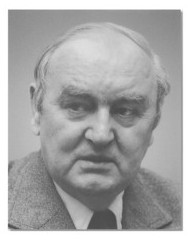 |
Graduate of Gdańsk University of Technology (1934); a construction engineer. He designed port structures in Gdynia and built an airframe factory in Mielec. He spent the war in an Oflag prisoner-of-war camp, where he devoted his time to preparing the theses for his later dissertation and habilitation degree, which he received just after the war in September-December 1945, from the Warsaw University of Technology. Since 1945, at the Gdańsk University of Technology: Associate Professor (1947), Head of the Structural Mechanics Department, Dean of the Faculty of Civil Engineering (1947-1949) and Vice-Rector (1949-1952). In 1952-1955, he headed the Department of Structural Mechanics at the Faculty of Industrial Engineering of the Warsaw University of Technology. In 1955-1981, he joined the University of Warsaw, where he took up the position of: head of the Department of Elasticity and Viscosity Theory (1955-1969), the Department of Solid Mechanics (1969-1981) and director of the Institute of Mechanics (1969-1978). Since 1952, he was a corresponding member, and since 1956 - a member of the Polish Academy of Sciences and Secretary of Research of the Department IV of Technical Sciences (1956-1968). At the Polish Academy of Sciences, he held the following positions: Secretary of Research (1956-1968), vice-president (1969-1977) and president (1978-1980). He was also one of the founding fathers of the IPPT: founder and manager of the Laboratory of Theory of Elasticity, mentor of the Department of Theory of Continuous Media. For many years, he chaired the IPPT Scientific Council. Creator of the Polish school of thermal elasticity and asymmetrical elasticity and initiator of research in the theory of interconnected fields. He authored over 200 publications, including several monographs, which were translated into many languages. He is also the author of well-known academic textbooks, reprinted in Poland and abroad. He supervised 28 dissertations. Honorary doctor (doctor honoris causa) of ten universities and a member of three foreign academies of sciences. Honoured with the highest state awards, he was a two-time laureate of the First Class State Award (1955 and 1964). |
Prof. JANUSZ GROSZKOWSKI (1898–1984)
 |
Radio and electronics engineer. One of the first graduates of the Warsaw University of Technology (WUT) in 1919 and the Military Academy for communications officers in Paris (1922). As such, he was a lecturer on radio engineering in military schools. In 1928 he received a doctorate degree for his thesis on radio wave stability compensation method (Metoda kompensacyjna kontroli stałości fali) and was appointed Chair of Radio Engineering at the WUT Faculty of Electrical Engineering. In 1929 he was appointed associate professor and subsequently, professor in 1935. In 1928 he initiated the establishment of the first radio engineering institute in the country (later Institute of Telecommunications), which he directed since 1934. During occupation years, he was the underground lecturer at University. Simultaneously to his educational career, he was a soldier of the Polish Home Army, in which he managed to decipher missile navigating systems of V-2 rockets. In 1945 he founded the WUT Faculty of Electrical Engineering (later Faculty of Communications), where he chaired the Radiolocation Institute until retirement in 1968. He organized the first Polish Academy of Sciences (PAN) research units: the Electronics Unit and The Institute of Fundamental Technological Research in Science (IPPT), to which the unit was later incorporated. In 1961-1963 he was appointed Director of IPPT PAN. Janusz Groszkowiski was an outstanding expert in high vacuum measurement. He gained international recognition for his work on ionizing heads for low-pressure measurement. Author of 16 patents and 361 scientific papers, also books (Techinika wysokiej próżni, 1972). Supervisor of 33 dissertations. Since 1936, he was a member of Akademia Nauk Technicznych (Academy of Technical Sciences), since 1949 – Towarzystwo Naukowe Warszawskie (Warsaw Scientific Society), since 1952 he was a member of the PAN, since 1957 – its vice-president, and then in 1962-1971 its president. He resigned from being a member of the Sejm (lower house of the Polish Parliament) of the PRL - People’s Republic of Poland, and vice-president of Rada Państwa (the State Council), as an act of protest against progressing political repression in 1976. Member of 6 foreign academies of sciences (Czechoslovakia, Hungary, the Soviet Union, Romani, Bulgaria and Cuba) and honorary member of many associations. Laureate of the First Class State Award (1951, 1955, 1968, 1979). He was conferred the degree of honorary doctor (doctor honoris causa), at: Warsaw, Gdansk, and Łódź Universities of Technology. Holder of state awards: the Gold Cross of the Virtuti Militari War Order, Commander's Cross of the Order of Polonia Restituta (twice), Officer's Cross of the Order of Polonia Restituta. The Military Communication Institute credited professor Groszkowski’s scientific achievements, giving the Institute his name. |
Prof. CZESŁAW EIMER (1922–1982)
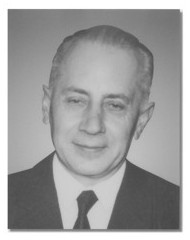 |
Prof. Eimer graduated from the AGH University of Science and Technology (1949); he received the doctorate degree in 1951; he was made associate professor in 1962 and professor in 1969. He worked at IPPT PAN since its establishment in 1952. He headed the Laboratory of Theory of Elastic Structures (1955-1959), Rheology of Structures (1969-1981), and IPPT Doctoral Study (1968-1978). An outstanding civil engineer. Co-author of pioneer papers on reinforced structures and the rheology of structures (theory, bridge designs, Polish Standard PN-B, patent for the continuous production of prestressed concrete etc.) A well-known researcher into multiphase media; he proposed a rheological model of micro-cracked concrete, later known as Eimer’s micro-cracked concrete. He managed a project aiming at setting up the calculations of containment building of a nuclear reactor in Żarnowiec. He was one of those scientists who could combine abstract thinking with practical use of the technical knowledge. He co-authored two monographs and authored ninety-two publications in prestigious Polish and foreign journals. |
Prof. STEFAN CZARNECKI (1925–1982)
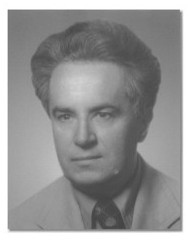 |
Graduate of the Gdansk University of Technology, Faculty of Electrical Engineering (1942). From 1953 to 1962 at the Department of Analogy IPPT, which he headed. Again at IPPT since 1974- head of the Department of Aeroacoustics. He received the doctoral degree (PhD) in 1959, habilitation degree (DSc) in 1965, 1972 – associate professor degree, 1980 – professor degree. Author of over 100 scientific papers in the fields related to aerodynamic sound generation, industrial noise reduction, interior acoustics, theory of acoustic screens, sound source identification and acoustic energy transmission paths. Organizer of numerous international conferences, including 2nd FASE Congress and INTER-NOISE'79. Long-term Secretary of Research of the Polish Academy of Sciences Committee on Acoustics, co-founder of PTA (Polish Acoustical Association). Creator and editor-in-chief (since 1966) of the Archiwum Akustyki (renamed to the ‘Archives of Acoustics’ in 1974). |
Prof. WACŁAW OLSZAK (1902–1980)
 |
Graduate of the Vienna University of Technology in Civil and Water Engineering (1925). He furthered his studies at the Faculte des Sciences at Paris University (1926-1927). Doctorates: 1933, at the Vienna University of Technology – a dissertation on reinforced concrete structures, in 1934, at the Warsaw University of Technology – a dissertation on the theory of plasticity (under the supervision of M.T. Hubert). Habilitated in 1937 at the AGH University of Science and Technology on statics and dynamics of anti-aircraft structures. In 1946, he became associate professor, and head of the Department of Strength of Materials at the AGH University of Science and Technology in Cracow. He organized research in the field of prestressed structures and applied mechanics at two universities – the AGH and the newly-established Cracow University of Technology. In 1952, he started his cooperation with the Warsaw University of Technology and the then-establishing Polish Academy of Sciences and created the first Department of Theory of Elasticity and Plasticity and the Department of the Mechanics of Continuous Media, thus creating solid foundations for the IPPT, which he directed until 1970. In 1954, he became a corresponding member, and in 1956, a member of the Polish Academy of Sciences. Director of IPPT (1963-1970), Secretary to the 4th Department of the Polish Academy of Sciences (1957-1960), member of the PAN Presidium, co-organizer and rector of the International Centre for the Mechanical Sciences in Udine (CISM) (1970-1980). Creator of the world-famous Polish school of theory of elasticity. His scientific research included: theory of elasticity; theory of prestressed structures; rheology. Author of 290 scientific papers, 10 monographs, editor of 6. Co-founder and member of the board of the RILEM and IASS, IUTAM and IABSE. Co-founder of the Archiwum Mechaniki Stosowanej (Archives of Applied Mechanics) and Rozprawy Inżynierskie (Engineering Theses), 1949. Member of editorial committees of many magazines, organizer of international meetings. He initiated the Polish Conference of Solid Mechanics. Great international authority, propagator of the achievements of Polish mechanics abroad. Supervisor of 16 doctoral students. Honorary doctor (doctor honoris causa) of 9 domestic and foreign universities. Member of 17 foreign academies of sciences. Winner of many state and international awards, a two-time winner of the Polish State Award. |
Prof. ALEKSANDER KRUPKOWSKI (1894–1978)
 |
He graduated from the Faculty of Metallurgy at Peter the Great St. Petersburg Polytechnic University in 1917. After returning to Poland, he started working in secondary education, and then as a teaching assistant at the Faculty of Metal Science at the Warsaw University of Technology. In 1928, he received his doctorate; in 1930, the degree of venia legendi, (corresponding to the contemporary Polish habilitation degree – a post-doctoral academic degree) and was appointed associate professor, and then, in 1939, professor. Also in 1930, he was appointed professor at the AGH University of Science and Technology and in 1934, member of the Academy of Technical Sciences. During the Second World War, together with other professors from Kraków’s universities, he was deported to Sachsenhausen concentration camp, and returned in 1940. Following the establishment of the Polish Academy of Sciences (PAN) in 1952, he also became its member. He was appointed Head of the Metals Department of PAN, founded upon his initiative and based in Cracow, and since 1953, operated as part of the Institute of Fundamental Technological Research of the Polish Academy of Sciences (IPPT PAN). In 1969, the department started operating as an independent research centre of the PAN and, subsequently, was given the name of A. Krupkowski Institute of Metallurgy and Metal Engineering of the Polish Academy of Sciences. Aleksander Krupkowski’s high versatility allowed for developing his interests in a vast area of metal science: thermodynamics of basic metal production and refining processes; the kinetics of oxidation and reduction reactions in oxides; metal rectification: phase transitions in alloys, plastic deformation processes, and mechanical properties. He succeeded in achieving outstanding results in all these areas of interest. The author of about 300 papers published in Poland and abroad, including two very significant monographs: Zasady termodynamiki i ich zastosowanie w metalurigii i metaloznawstwie (Principles of thermodynamics and their application in metallurgy and metal science, 1958) and Podstawowe zagadnienia teorii procesów metalurgicznych (Basic issues of the theory of metallurgic processes, 1974). Despite his lack of commitment in the political life of the communist PRL (which to many guaranteed career successes), he was awarded highest state prizes for his contribution to science – he was a three-time laureate of the First Class State Award and was conferred the degree of honorary doctor (doctor honoris causa), at the Freiberg University of Mining and Technology. |
Prof. JERZY WEHR (1924–1977)
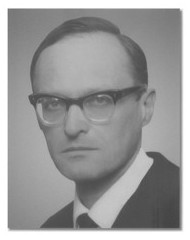 |
Graduate and – since 1948 – assistant at Warsaw University of Technology, Department of Electronic Engineering. One of the first employees of the Department of Vibration Research Polish Academy of Sciences (1952) in the field of acoustics. At IPPT PAN since the Vibration Research Department was incorporated into the Institute, until his tragic death in the mountains in Hindu Kush. He received the doctoral degree in 1960, habilitation degree in 1967 and professor degree in 1975. Head of the Department of Physical Acoustics (1961-1973), IPPT deputy director for research (1973-1977). Most of his research was devoted to methods of acoustic measurement, relations between parameters of acoustic fields and mechanical properties of solids and fluids, and also the applications of piezoelectric transducers. Author of 2 books, 60 publications and 10 patents. He became a leading authority among the international community of acousticians. |
Prof. JULIAN BONDER (1900–1975)
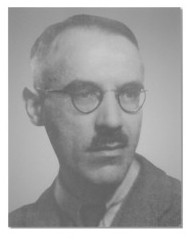 |
Aviation Engineer, graduate (1929) and researcher at the Warsaw University of Technology (1939-1945). His research in analytical mapping and the use of conformal mapping resulted in receiving a doctorate in 1931 and habilitation in 1934. Corresponding member (1954) and then member (1966) of the Polish Academy of Sciences. Since 1946, professor at the Silesian University of Technology, where responsible for the initiation of technical studies. Since 1952, professor at the Department of Aerodynamics at WUT, and since 1955, at the Department of Aerohydrodynamics of the Faculty of Mathematics and Physics at the University of Warsaw. Organizer and Head of the Department of the Mechanics of Fluids and Gases at IPPT PAN (1953-1961). Initiator of the first scientific conferences devoted to the issues and methods in liquid mechanics, later transformed into international biennial symposia. Author of 50 scientific papers, most of which were devoted to the methods of analyzing aerodynamic fields in spatial, non-stationary compressible flows. Author of the unified theory of simple and double waves in gas dynamics and mathematical bases for the description of inviscid compressible flows. |
Prof. KRYSTYN BOCHENEK (1925–1966)
 |
Graduate of the Faculty of Electrical Engineering of Gdansk University of Technology (1948), doctor of Warsaw University of Technology (1954), assistant professor to the Polish Academy of Sciences (1955), associate professor (1963). He worked at IPPT in 1954-1957 and 1960 (between these years, he worked at the Military University of Technology). Head of the Laboratory of Theory of Electromagnetic Fields at the Department of Theoretical Electrical Engineering, and since 1964, acting Head of the Department of Theory of Communications. An outstanding specialist in the field of theory and application of electromagnetic waves (asymptotic properties, impact waves, propagation in ionized media, radiation, antennas, waveguides, and transmission lines). Lecturer, constructor of ARAL analogue machine - one of the first three mathematical machines in Poland. Organizer of a conference on the theory of electromagnetic waves. Since 1954, he was the Secretary of Polski Komitet Narodowy URSI, Międzynarodowa Unia Nauk Radiowych (URSI Polish National Committee of the International Union of Radio Science). Founder, member and secretary-general to PTETiS (Polskie Towarzystwo Elektrotechniki Teoretycznej i Stosowanej – Polish Society of Theoretical and Applied Electrotechnics, established in 1961). Author of over 40 scientific publications, including a monograph - Metody analiz pól elektromagnetycznych (Methods of analyses of electromagnetic fields), supervisor of 10 doctoral dissertations. |


